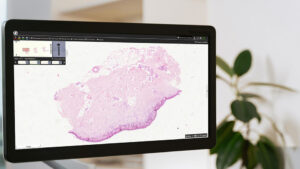Synopsis
Choosing an appropriate research microscope is fundamental for high-quality digital microscopy. Understanding your unique research needs, including microscope type and specific goals, is paramount. This selection can be challenging, but a microscope that aligns with your requirements is essential. Besides considering your research objectives, factors like microscope type and questions to be addressed play a vital role. This article explores these crucial aspects to guide you in making a precise and effective microscope selection, ensuring optimal research results, and facilitating impactful scientific discoveries.
Why Do You Need the Right Microscope for Research Activities?
Microscopes have been an indispensable tool for scientific research for centuries, allowing scientists and researchers to study the complex world of tiny objects. From the first discoveries of cells and microorganisms to recent advances in nanotechnology, microscopes have played a key role in advancing our knowledge of the natural and man-made world. However, not all microscopes are the same and choosing the right microscope for your research activities is extremely important. Here are the top reasons why the right microscope is essential for fruitful research.
Stay Ahead with Insights from Precipoint!
Welcome to our newsletter! Be the first to know about our latest products, services, webinars, and happenings in PreciPoint. Don't miss out on this opportunity to stay informed. Subscribe to our newsletter today!
By clicking “Subscribe”, you agree to our privacy policy.
Resolution and Clarity of Observation
A microscope with the right specifications and features will provide you with the resolution and clarity you need for your observations. Resolution is the ability of a microscope to distinguish between closely spaced objects or small details in a sample. High-resolution microscopes allow you to visualize and analyze tiny structures, providing a level of detail that is crucial in scientific research. Whether you are studying biological samples, nanoscale materials, or other objects, the right microscope is essential for clear and accurate observations.
Applicability to Research Field
Different research fields have unique requirements when it comes to microscopy. For example, a microbiologist studying microorganisms in water samples may have very different needs than a materials scientist investigating the properties of nanoparticles. By choosing a microscope specifically tailored to your research area, you ensure that it has the right features, imaging techniques, and accessories to effectively address your research question.
Optical Techniques and Modalities
The right research microscope provides access to a variety of optical methods and visualization techniques for different types of samples and research tasks. Whether you need light field, dark field, phase contrast, fluorescence, or other imaging techniques, your microscope should be versatile enough to support the methods you need. Having a microscope with the relevant features enhances the depth and scope of the research capabilities.
Factors Influencing Microscope Selection for Research Purposes
Choosing the right microscope for research involves careful consideration of several factors. For example, when choosing a microscope for student research, durability, ease of use, and budget constraints are critical. These considerations should be addressed before even entering the decision-making process. Additionally, the availability of digital microscopes can simplify the selection process. When catering to students, it’s essential to assess their educational level. For example, microscopes for high-school or college students differ in requirements from those for Ph.D. and research students. Defining specific educational objectives and intended sample types is essential. Based on these criteria, it is important to choose the right type of microscope, whether it is a compound microscope for thin sections, a stereomicroscope for larger specimens, or a digital microscope with built-in cameras for easy image capture.
Magnification and Resolution
Whether you are performing digital or traditional microscopy, the primary purpose of a microscope is to magnify objects and obtain detailed images. Magnification and resolution are two key factors to consider when choosing a microscope for research purposes. Magnification determines how much the object is magnified, while resolution determines the ability of the microscope to distinguish between two objects in close proximity. Resolution helps to visualize fine details, improve scientific understanding, accelerate biological and medical research, and perform quality control.
Visualizing Fine Details
Research often requires the study of fine structures, such as cell organelles, nanoparticles or molecular interactions. Without sufficient resolution, these details can remain hidden or appear as blurry blobs, making it impossible to draw accurate conclusions from observations.
Enhancing Scientific Understanding
The main goal of digital microscopy in scientific research is to better understand the micro- and nanoworld. The high resolution allows scientists to visualize and study complex details, leading to more accurate measurements and better-founded hypotheses.
Advancing Biological and Medical Research
In digital microscopy, scientists use microscopes to examine cellular and subcellular structures. The ability to distinguish fine details is essential for tasks such as diagnosing diseases, understanding cellular processes and developing new treatments.
Quality Control and Assurance
Microscopes are sometimes used for quality control and quality assurance. You need to be able to inspect and measure small defects or features, which is essential for quality assurance and product reliability.
Key Takeaway
When choosing a microscope, it’s important to ensure it provides the magnification and resolution required for your research needs. High-resolution microscopes are essential for in-depth studies of cell structures, while lower magnification may be appropriate for larger samples or general observations.
Illumination
Proper lighting is essential for getting clear and precise images with a microscope. Bright field illumination, dark field illumination, phase contrast DIC illumination and fluorescence illumination are commonly used in microscopes.
Brightfield Illumination
Brightfield illumination is the most common type of illumination, suitable for transparent specimens. It requires staining or contrasting techniques for better visibility.
Darkfield Illumination
Darkfield illumination illuminates samples against a dark background and makes transparent or faintly colored objects more visible. It is ideal for observing live bacteria, microorganisms and particles.
Other Types of Illumination
Phase contrast illumination and DIC illumination enhance the contrast of transparent samples without the need for staining. They are essential for observing living cells and biological materials. Fluorescence illumination is used to visualize specific molecules or structures in the sample. This type of illumination requires fluorescent labeling.
Camera and Imaging Options
Digital imaging and documentation features are often decisive when selecting the right microscope for your workflow. Research microscopes often offer integrated cameras or the capability to attach external ones. Integrated cameras provide a known quality of output. However, when choosing a microscope without an integrated camera, it is important to assess its compatibility with digital imaging equipment and software. This consideration ensures seamless integration for the capture and analysis of high-quality images and video, which is essential for accurate research analysis and documentation.
Analysis and Measurement
Digital imaging systems are often accompanied by software that enables in-depth analysis and measurement of captured images. You can perform tasks such as counting cells, measuring dimensions and precisely measuring features.
Real-time Observation
Some cameras provide real-time observation on a computer or monitor, allowing multiple individuals to view the same specimen simultaneously. This feature is useful for educational settings and collaborative research, where it is necessary for students or colleagues to observe and discuss the same sample.
Image Enhancement
Digital cameras can enhance images by altering different parameters, for instance brightness, contrast or color balance hence. These features lead to accurate reproduction of specimen facilitating recognition of vital information.
Conclusion
Selecting the ideal research microscope for your laboratory hinges on a precise alignment with your requirements. This involves determining the necessary magnification, resolution, illumination, and camera options. Your choice must depend on factors like observing details, specimen size, and lighting needs. Magnification and resolution are pivotal in determining how objects are enlarged and fine details visualized. Clear, accurate images are vital, making proper illumination essential. Integration with digital imaging tools and software for analysis is also crucial. Digital microscopes offer comprehensive solutions, seamlessly adapting to your needs. Visit our website to discover the perfect microscope tailored to your specifications.











